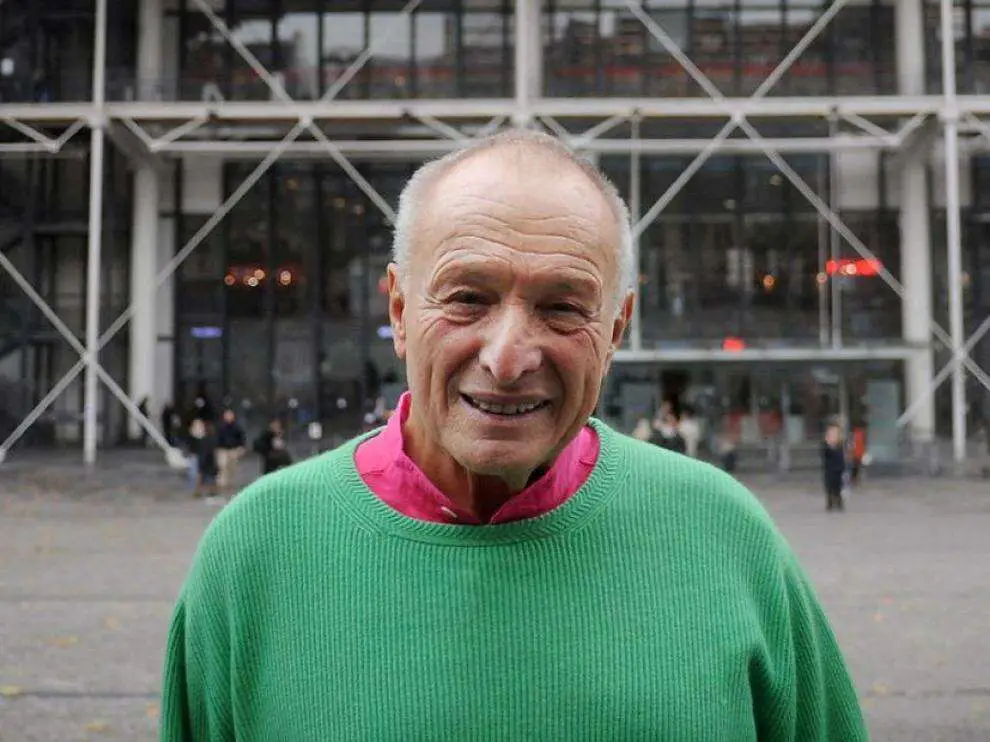The British architect and urban planner, who designed with Renzo Piano of the Center Pompidou, died on Saturday at the age of 88.
All those who considered the only real architectural exhibition as a royal visit to the building were delighted with the retrospective exhibition dedicated to Richard Rogers by the Pompidou Center in 2007. After the one dedicated to Renzo Piano in 2000, this presentation collected in the bowels of Beaubourg has finished recreating the “This Machine Does It All” look. In the words of the British architect, it was now fully adopted in the Les Halles landscape, but disputed in its time.
Often associated with unfortunate metaphors, the Pompidou Center was a radical project in harmony with the invention of a social practice of culture, open to all audiences. (Loic Fonsen / AFP)
However, in 1977, thirty years earlier, at the time of the inauguration, the figure invented by Rogers and the piano caused a lot of ink to flow. Building the intestine, the center of the viscera, building the chimneys, expressions flourished, often pictorial, not always happy. Today, we no longer see Beaubourg, we are jumping there. Delving into fluid systems, their highly staggered external cycles, their technical interface with industrial codes, their resounding colors, we will recall that it was a radical project in osmosis with the invention of a social practice of culture, open to all audiences.
Interview with Renzo Piano on the occasion of the 40th anniversary of the Center Pompidou.
Richard Rogers passed away on Saturday, December 18 at the age of 88, and has gained international fame thanks to this building. «Rogers is unfairly recognized in France, Olivier Cinqualbri, then curator, explained it in 2007. He is criticized for his mechanical action since he always does the same thing. However, it is in the line of the great French manufacturers, from Pierre Charot to Jean Prouvy. It should have caused envy in France. Even the gossips evoke its architecture bicycle wheels. He also built little in France. However, Bordeaux Court (1998) deserves a detour: between narrative and geometry, it shows transparency as a statement of institutional place, often withdrawn, and bioclimatic principles that it will not stop developing.
However, Richard Rogers’ exact cause of death has not been disclosed to the public.
It is not easy to immerse yourself in the work of Rogers, who was born on July 23, 1933, in Florence, Italy. His glass and metal buildings – initially high-tech, often expressive, but unrelated to the fine sculptural objects in vogue – are sometimes blurred by too much apparent technology. We will even come up with a new term to speak of this architecture that reveals the flows: «Polyuretics», taken from Intestine Intestines and intestines in English.
You can recognize the development of his work in the great city he built, London. It was there, in the wake of Beaubourg, and closely related to the tower designed for Lloyd’s, an international insurance market, that it was completed in 1986. An icon is famous for being a flexible place for organized exchange around the lobby, Lloyd’s defined by the movements of the elevators and their external art ducts; Once again, it overflows with a mechanical aesthetic, but despite the technological tricks, this building has the oddly shaped silhouette of a contemporary medieval building.
Explained In 1991 By Elizabeth Ii And The Creation Of Baron Rogers Of Riverside In 1996, The Architect Has Sat In The House Of Lords On The Workbenches.
Also in the 1980s, the National Gallery expansion was described as “The Wart of Trafalgar Square” by a very conservative Prince Charles. The debate will be alive. Rogers will reply that “Buildings can be coordinated by contrast and not just by drawing inspiration from one style.”. In 1986, in an exhibition manifesto (“London as it could be”), he laid out the fundamental principles of his vision of architecture and urbanism: that is, dense cities, social diversity, and respect for the environment. Some of its proposals, such as the public park on the south bank, have been implemented. From the poetic Millennium Dome in Greenwich, which sparked controversy in 2000, to the tower at 122 Leadenhall Street renamed “Cheese Grater” and alongside the tower that Norman Foster dubbed “The Pickle,” Rogers sculpted the London landscape.

